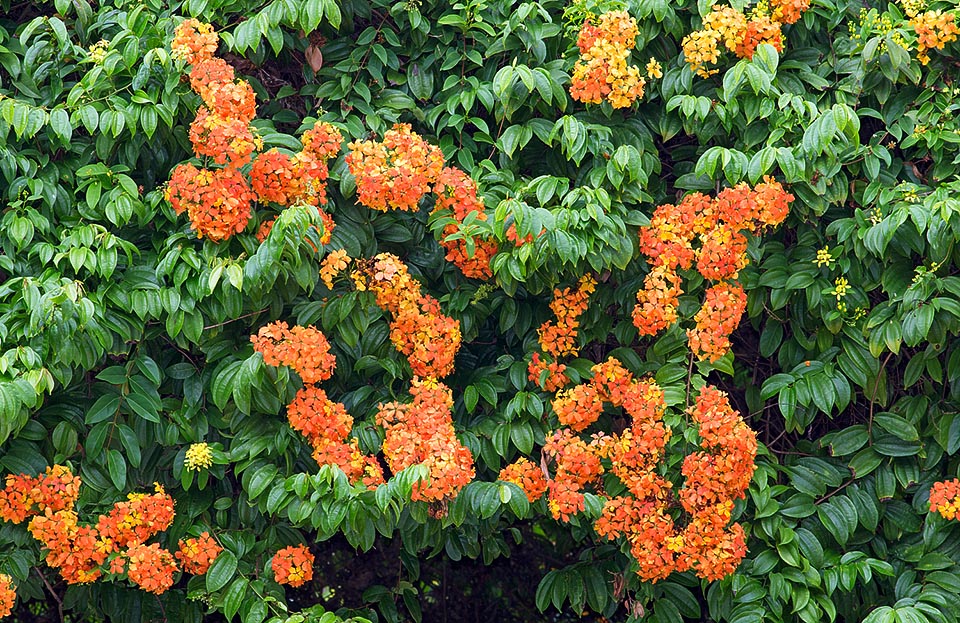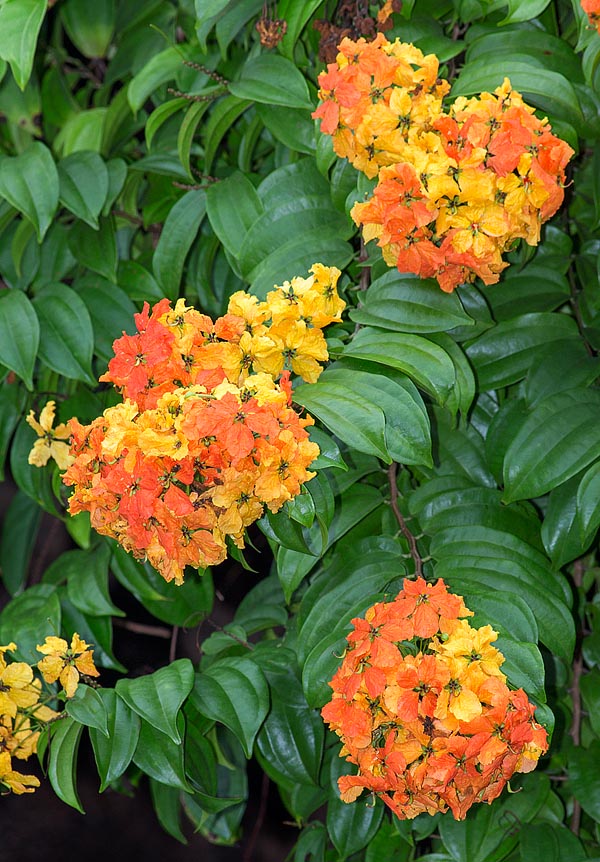Family : Fabaceae

Text © Pietro Puccio

English translation by Mario Beltramini
The species is native to Indonesia and Malaysia where it grows, climber, in the pluvial forests until it covers the crowns of the trees.
The genus is honoured to the brothers Jean (1541-1613) and Gaspard (1560-1624) Bauhin, Swiss botanists, due to the bilobed leaves; the species is honoured to the lieutenant governor of the Netherlands East Indies Hendrik Merkus de Kock (1779-1845).
Common names: climbing bauhinia, orange bauhinia, Kock’s bauhinia, red trailing bauhinia (English); katup-katup, ketup-ketup, bunga-merak (Malay).

Bauhinia kockiana is a woody climber of Indonesia and Malaysia where vigourously grows in the rain forests covering even the tops of the trees © Giuseppe Mazza

30 m stems. Showy inflorescences and petals turning with time from yellow to orange, tending to red © Giuseppe Mazza
It propagates by seed, rarely produced in cultivation, which has to be interred as soon as possible, having a very limited time of germination, utilizing an organic loam with addition of siliceous sand or perlite kept humid with non-calcareous water, at the temperature of 24-28 °C, which germinates in 2-4 weeks; it reproduces also by woody cutting, even if rather difficult to be rooted, and, most frequently, by air layering, the plants reproduced by seed and cutting may take some years before blooming.
Vigorous and fast growing specie with luxuriant foliage and showy blooming, prolonging almost during the whole year, considered as standing among the most ornamental of the genus, requires a markedly tropical climate with high temperatures and humidity constant all the year round, exposition in full sun, for the best blooming, fertile and well drained soils, preferably acidic, and regular and abundant irrigations.
It is suitable for covering fences, trellises, pergolas or, like in the wild, for climbing on the trees; the prunings are useful, to be done after the blooming, for keeping compact its posture and encouraging the formation of new floriferous branches. Where the climate does not allow the permanent cultivation in open air, it can be cultivated in pot, and then to be sheltered during the coldest months in an as much as possible luminous location with temperatures not under the 16 °C, utilizing a loam rich of organic substance with addition of siliceous sand or perlite per about the 30%; the waterings must be regular, but without stagnations, and the fertilizations to be done with balanced products with addition of microelements.
Synonyms: Bauhinia creaghii Baker (1896); Phanera kockiana (Korth.) Benth. (1852).
→ To appreciate the biodiversity within the family of FABACEAE please click here.
